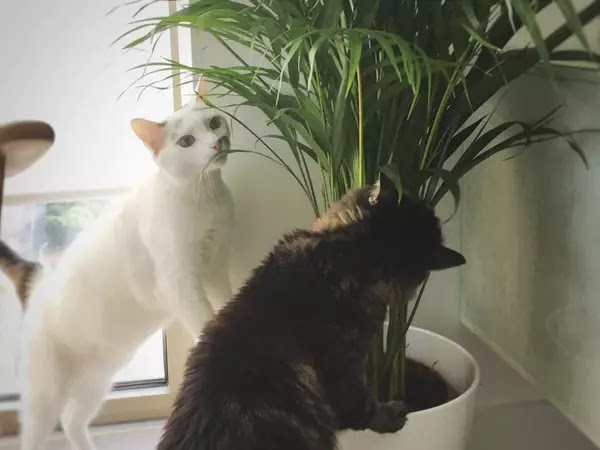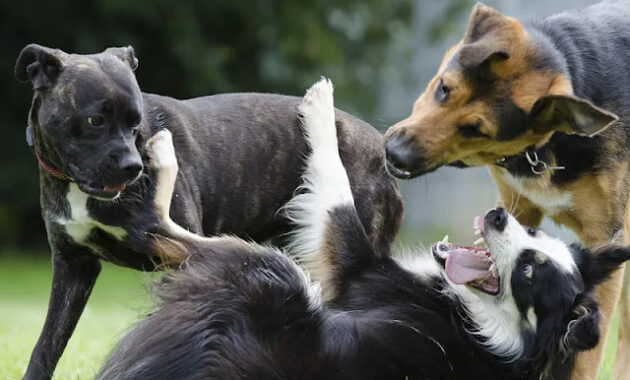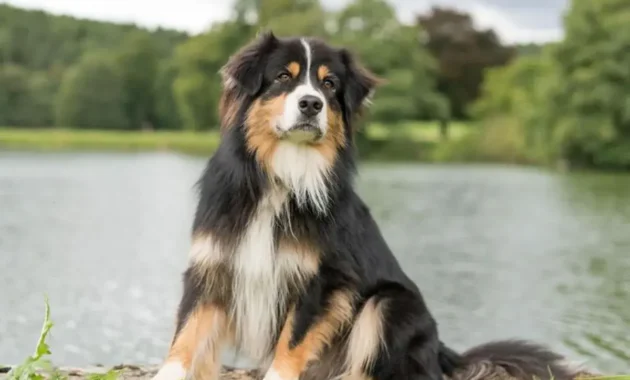Are you a fellow cat lover who also loves having indoor plants? Well, you’re in luck because, in this blog post, we’re going to talk about the 7 best non-toxic plants for cats that you can add to your indoor garden.
Indoor gardening has become increasingly popular over the past few years, and for good reason! Not only do plants add some much-needed greenery and life to your living space, but they can also have a positive impact on your mental and physical health.
However, as much as we love our furry friends, it’s important to keep in mind that not all plants are safe for them to be around. Cats, in particular, have a tendency to nibble on plants, and some can be toxic and harmful to their health. That’s why it’s crucial to ensure the safety of your pets when selecting plants for your indoor garden.
So, let’s dive into the world of non-toxic plants for cats and find out which ones you can safely add to your home!
Why Non-Toxic Plants Are Important for Cats
You might be wondering why it’s so important to choose non-toxic plants for cats. Well, the answer is simple – cats are curious creatures, and they love to nibble on plants. Unfortunately, many plants are toxic and can cause harm to your furry friend if ingested.
Here are some of the risks of toxic plants to feline health:
- Nausea and vomiting
- Diarrhea
- Lethargy
- Difficulty breathing
- Seizures
- Kidney failure
- Even death in severe cases
As you can see, the consequences of a cat ingesting a toxic plant can be severe. It’s essential to be aware of the common symptoms of plant poisoning in cats, which can include vomiting, diarrhea, and lethargy. If you notice any of these symptoms in your cat, it’s essential to take them to the vet immediately.
That’s why it’s crucial to choose non-toxic plants for your indoor garden if you have cats at home. By doing so, you can enjoy the benefits of indoor plants without having to worry about the safety of your furry friends.
Top 5 Non-Toxic Plants That Are Safe for Cats
Now, let’s talk about the top 5 non-toxic plants that are safe for cats. Not only are these plants safe for your furry friend, but they also offer various benefits, such as improving the air quality in your home.
.webp)
1. Spider Plant (Chlorophytum Comosum)
Spider Plant – Spider plants are incredibly easy to care for and can help improve the air quality in your home by removing harmful toxins. They also produce small white flowers, which can add some lovely decor to your home. However, it’s worth noting that spider plants can be mildly hallucinogenic for cats, so it’s best to keep an eye on your furry friend if they decide to nibble on it.
.webp)
2. Boston Fern (Nephrolepis Exaltata)
Boston ferns are a great addition to any indoor garden, as they are known to purify the air and remove toxins. They are also relatively easy to care for, as they prefer indirect light and high humidity. However, it’s important to keep the soil moist, as they can be sensitive to dryness.
.webp)
3. Money Plant (Epipremnum Aureum)
Money plants are low maintenance and can grow in almost any condition. They are non-toxic to cats and can be placed on a shelf or hung in a basket.
.webp)
4. Polka Dot Plant (Hypoestes Phyllostachya)
Polka Dot plants are colorful and can greatly add to any living space. They are non-toxic to cats and can be grown in pots or hanging baskets.

5. Areca Palm (Dypsis lutescens)
Areca palms are an excellent choice if you’re looking to add some tropical vibes to your home. They are known for their ability to purify the air and remove harmful toxins. They also require minimal care, as they can thrive in low to bright light and do not require frequent watering.
6. African Violet
African violets are a popular choice among indoor gardeners, as they produce beautiful purple flowers and are relatively easy to care for. They prefer indirect light and slightly moist soil, making them an ideal choice for low-light areas of your home.
7. Calathea
Calatheas are known for their unique and eye-catching foliage, making them a great addition to any indoor garden. They also help improve the air quality in your home by removing harmful toxins. However, they can be a bit finicky when it comes to care requirements, as they prefer humid environments and consistent watering.
When it comes to caring for these non-toxic plants, it’s important to research their specific care requirements and tailor your care routine accordingly. It’s also essential to keep in mind any specific precautions or considerations for each plant, such as the spider plant’s mild hallucinogenic effects on cats. By choosing one or more of these non-toxic plants for cats, you can create a beautiful and safe indoor garden for you and your furry friend to enjoy.
How to Care for Non-Toxic Plants
Congratulations on selecting non-toxic plants that are safe for your furry feline friends! Here are some general tips on how to care for these plants and keep them thriving
Choosing the Right Soil, Pot, and Light Conditions
- Ensure that you are using the right type of soil for your plants. Many non-toxic plants prefer well-draining soil that is slightly acidic.
- Select a pot that is appropriately sized for your plant, with enough room for growth and drainage holes at the bottom to prevent over-watering.
- Most non-toxic plants prefer bright, indirect sunlight. Make sure to place them near a window that receives plenty of light, but avoid direct sunlight, which can scorch their leaves.
Watering and Fertilizing
- Check the soil moisture level regularly and water your plants when the top inch of soil feels dry to the touch.
- Avoid over-watering, which can lead to root rot and other issues.
- Most non-toxic plants do not require frequent fertilizing. You can use a balanced, all-purpose fertilizer every few months during the growing season to provide extra nutrients.
Dealing with Pests and Diseases
- Inspect your plants regularly for signs of pests, such as spider mites or aphids. If you notice any issues, try spraying your plants with a gentle, natural insecticide or simply wiping them down with a damp cloth.
- If your plants develop any diseases, such as fungal infections or root rot, act quickly to prevent further spread. Remove any infected parts of the plant and adjust your care routine as necessary.
Conclusion
To recap, having non-toxic plants in your indoor garden is essential if you have cats at home. These plants not only help purify the air, but they also provide a safe environment for your feline friends.
By incorporating the top five non-toxic plants discussed in this article – Spider Plant, Areca Palm, Bamboo Palm, African Violet, and Boston Fern – you can enhance the look and feel of your home while keeping your cats safe.
Remember to always research any new plant you’re considering adding to your collection and ensure it is safe for cats. Also, make sure to keep your plants out of reach of your cats, provide proper drainage and lighting, and use appropriate soil to prevent any pests or diseases.
By following these simple tips and choosing the right plants, you can create a beautiful and safe indoor garden for both you and your furry friends to enjoy.
FAQs:
What happens if my cat eats a toxic plant?
If you suspect your cat has ingested a toxic plant, immediately take them to the vet. Symptoms of plant poisoning in cats may include vomiting, diarrhea, lethargy, and difficulty breathing.
Are succulents safe for cats?
Some succulents, such as the Christmas Cactus and Haworthia, are non-toxic to cats. However, others, like Aloe Vera and Jade plants, are toxic and should be avoided.
Can cats eat spider plants?
Although spider plants are non-toxic to cats, some cats may develop an upset stomach if they eat too much. It’s best to keep an eye on your cat and discourage excessive nibbling.
Can cats and plants coexist in the same room?
A: Cats and plants can coexist in the same room if you choose cat-friendly plants. However, it’s always best to monitor your cat’s behavior and ensure they are not ingesting any plants. Placing plants out of their reach or behind closed doors may be best if you have a particularly curious cat.
Can I use fertilizers on my cat-friendly plants?
Cat-friendly plants are non-toxic, so it’s important to be cautious when using fertilizers. Some fertilizers can harm cats, even if the plants are not. Look for pet-friendly fertilizers or use natural alternatives like compost or worm castings.
What are some signs that my cat has ingested a toxic plant?
Symptoms of plant poisoning in cats can include vomiting, diarrhea, lethargy, difficulty breathing, and in severe cases, seizures or even death. If you suspect your cat has ingested a toxic plant, seek veterinary attention immediately.


